Having been exposed to the writings of Rabindranath Tagore, the biography of Ramakrishna (a mystic and the spiritual master of Vivekananda) and Bimal Roy’s movies, my heart yearned to experience this land called West Bengal. I reached Kolkata in early March and my cousin broached the subject of Dakshineshwar temple, the abode of goddess Kali who was the aaradhya devi of Ramakrishna Paramahansa. We took a local cab to reach the shrine. We had the darshana and I was overwhelmed by the thought that this was the very place where Ramakrishna had experienced an ecstatic state of devotion and joy.
Dakshineshwar Kali temple is situated on the eastern bank of the Hooghly. Besides the nine-spired main temple, it has a bathing ghat and several temple buildings dedicated to different gods. On the other side of the river bank is the Belur math. It is the headquarters of the Ramakrishna Mission and was established by Vivekananda on the western bank of Hooghly River. Its architecture is a melange of the Hindu, Christian Islamic and Buddhist motifs. We rowed our way to Belur with dozens of pilgrims and were amused by the sweet Bengali chirping that surrounded us.
The Belur math consists of the shrines dedicated to Vivekananda, Sarda devi (wife of Ramakrishna), a book shop and the Samadhi of Ramakrishna. The Samadhi is placed in a huge meditation hall with a realistic marble statue of Ramakrishna. We meditated at the vibrant hall and traced our path back home in silent contemplation.
The next morning we left for the place known for its ferocious cats, the Sundarbans. The Sundarbans shelters around 270 tigers in its womb and accommodates other species such as the chital, wild boars, the fox, macaques, about 170 species of birds and a variety of fish and reptiles.
We reached Gosaba district by bus from Kolkata. Local travel agencies arrange various package tours for tourists and it seems to be the plausible way to travel to Sundarbans. Ideally, travel by road upto Gosaba as we did and get yourself into a motor boat that swims through miles of waterways for hours together and takes you to a startlingly different world. It takes you from the world of grey civilization to the orange brick making plants, then to green villages, lonely blue green waters, marshy slate tinted banks, and deep brown tribal settlements.
Sundarbans is an extensive mangrove forest. It covers a 10,000 sq km area, out of which 6000 sq km lies in Bangladesh. To a layman like me, Sundarbans is a collection of vast number of mini islands. These are connected by waterways through which the villagers row their boats to commute, trade, and survive. Sundarbans has an extensive growth of ‘Sundari’ trees from which it gets its name and is a UNESCO world heritage site since 1997.
Out of the many options to stay at Sundarbans like the Sundarbans Jungle Camp, Sajnekhali Tourist Lodge etc, we chose to stay at the Sunderbans Tiger Camp. We are definitely among the lucky lot of travellers. After lunching at the resort, (all dishes were made in mustard oil) we left for Sajnekhali island by cruise. Sajnekhali tower is constructed to enable the tourists to see the vast stretches of the forest that it overlooks. Less than 10 minutes must have passed on the tower and we caught the glimpse of the Royal Bengal Tiger crossing a forest lane gracefully.
The chances to spot a tiger are obviously rare because the towers are few and located only at the outskirts of the forest. The tourists can be extremely noisy and there are no rules prohibiting nuisance of any sort as many visitors have still not figured out the difference between a sanctuary and a picnic spot. Next we went to another tower, Sandhyakhali. One could watch from here, the swift movements of the dotted deer, the weird crawl of a water monitor lizard and a large sized tortoise.
Then we went to the Bonbibi temple. Bonbibi is the goddess of the forest. She is worshipped mostly by the honey collectors and wood collectors (Hindu and Muslim alike) before entering the forest for protection against the frequent tiger attacks. The Bonbibi temple is a small shrine with the idol of Bonbibi, one seated on a tiger and another on a hen. Outside the temple, tribal crafts are sold.
Most resorts arrange for tribal folk dance and singing. If you appreciate various forms of art, you will certainly love seeing them perform. These performances not only echo the authentic tribal music but also allow the viewers to think in retrospect how far modernity has moved away from simple music and earthy, unpretentious joy.
At our resort too, a group performed folk dances and songs on a stage provided by the resort keepers. In their best glittering on-stage robes, their utter poverty, backwardness, skill and an artist’s pride all could be perceived simultaneously. I wished that they could just be proud tribals and not tourist magnets.
Sundarbans is quite inaccessible. It is divided into three parts. The first is open to the tourists. The second is open only for the fishermen and honey collectors and forbidden for tourists. The third is called the ‘core area’ (1700 sq km) which is absolutely prohibited area.
My next stop was Tagore’s Shantiniketan. One could opt for train travel but I insisted on travelling by car because I wanted to experience the vast plain lands of West Bengal. And I did not regret my decision. Though it took us longer (four hours) and was heavier on the pocket, we could endlessly enjoy the scenic beauty of this plain region. One could see heaps and heaps of potato crop, potato loaded on cycles, potato warehouses and potato-packed lorries heading for the city!
Shantiniketan is 212 kms. from Kolkata by road. It is a university town in the Birbhum district of West Bengal. One could hire a cycle rickshaw and tour the huge lush green campus. We watched from a distance, pupils studying under a huge tree. The most interesting part is the Uttarayan complex where Rabindranath Tagore used to live. It consists of different buildings like Udayana, Konark, Shyamali, Punascha and Udichi. Each reflects a different architectural style. One can also see, the Chhatimtala which was the place of meditation for Devendranath Tagore, the father of Rabindranath. One can also browse through the museum exhibiting arts and crafts at the Kala Bhavan. If you are a man/woman of learning, you will like Shantiniketan and if you aren’t, you will become one. It is certainly not easy to ignore the impact of the place that the genius himself occupied. I am reminded of a few lines by the poet, Rabindranath.
“The traveler has to knock at every alien door to come to his own, and he has to wonder through all the outer worlds to reach the innermost shrine at the end.”
With a variety of unique things like a world heritage wild life sanctuary, an age old university, an inspiring abode of Kali, intriguing old markets of Kolkata, trams, cycle rickshaws, hand-pulled rickshaws, the unique people of Bengal and classic Bengali sweets, West Bengal is an experience like no other. I am glad to have experienced it.
Nilesh P Megnani is a professor of philosophy who teaches not just the academics of his subject but the purpose of it to his students. He writes whenever he feel inspired and believes life is workable hypothesis and love, the elusive potion that might transform humanity.






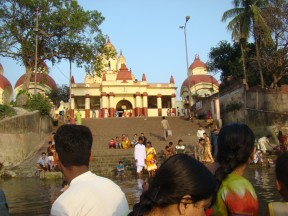
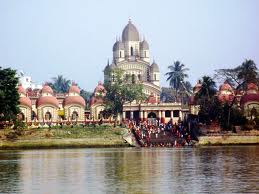
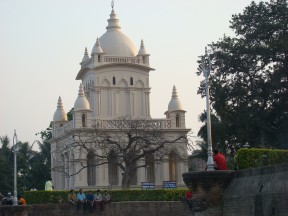
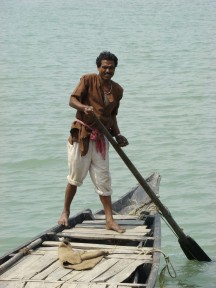
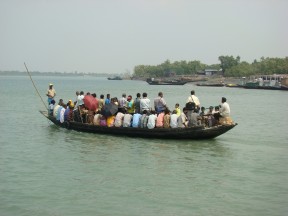
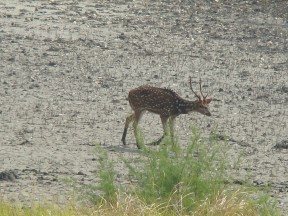
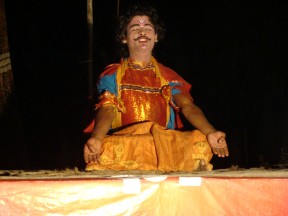
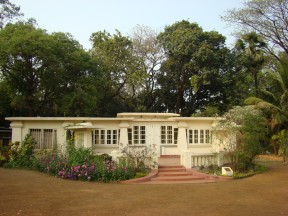
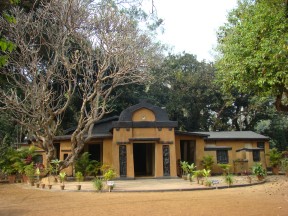
Beautiful description of a beautiful journey. Indeed Sundarbans and Shantiniketan are two major reasons why I’ve always nurtured the idea of visiting West Bengal.
Hi Neel sir, this is so good in terms that it actually took me to Sunderbans and Shantiniketan. I can imagine how beautiful the journey could have been… makes me wanna visit the place… well hope i do someday… 🙂
Even I too njyed a lot,I vl suggest everyone to hve a tour of ths wonderful place.
Thanks, Disha, Raj and Vidhi for reading and liking it.
Im surprised not to found any bengali poem on vivekananda or written by swamiji in bengali language
Vivekananda did write in Bengali. His work can be found in Bengali language and its English translation also. However his treatise on Raja yoga is believed to be his best work. Check this link, Pobitra..
http://svbw.wordpress.com/